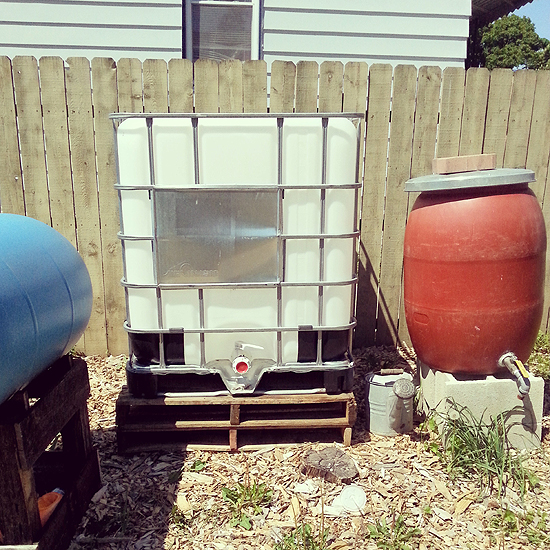You planted a garden and paid close attention to creating a garden that was water-wise and drought-tolerant. Water is expensive and it can be your biggest expenditure in maintaining your garden. But there are ways you can minimize the amount of water you use to keep your garden looking lush in the summer. Below we will give you tips on how to harvest rainwater to help you water your garden for free.

Roll out the rain barrel!
Harvesting rainwater does not have to be an expensive proposition. You buy commercial rain barrels, but you can save a few bucks by making your own rain barrel. Making your own rain barrel by upcycling plastic drums may make the most sense. The Brooklyn Botanic Garden calculates that a 1,000-square-foot roof produces 600 gallons of water. Rain barrels range from 55-80 gallons, so you may want to plan on have more than one connected to your downspouts.
Is rainwater harvesting safe?
Is rain barrel water safe? The BBG, points out that porous asphalt shingles and rolled roofing material is less desirable than smooth steel. Similarly wooden shingles treated with chromated copper arsenate (CCA) are not appropriate for rainwater harvesting. Does this mean that you can’t harvest rainwater to water your garden? Not exactly, but it does mean that if your roof is comprised of these materials, you shouldn’t use it to water a vegetable garden that you plan to eat from. But watering your native plants and garden beds with decorative annuals and perennials should be fine.
Is harvesting rainwater legal?
Rainwater harvesting is a very controversial subject in many arid states because of the limited yearly rainfall that occurs. The thinking is that any rainfall should be allowed to seep into the water table to be accessed by all, and rainwater harvesting diverts water for public consumption. A lot of local governments are easing up on laws that govern collecting rainwater, but you should check with your city and state to make sure you are not potentially breaking any laws. Even if you have never heard of rainwater harvesting being prohibited in your area, check with local officials because many cities and towns offer incentives and rebates for installing rain barrels.

Where to place your rain barrels
The easiest place to locate your rain barrel is below the downspout for easy attachment. Place your rain barrel in a spot that is higher than your garden. If your property is completely level, set your rain barrel on some bricks or pavers to raise it up. The reason we want our barrels higher up is so that gravity can help feed the water to the hose instead of having to use a pump to draw the water out.
Tired of the hard calcium deposit on the potted indoor plants, I started to harvest rainwater on my porch one year using a bucket and plastic dog cone. How serious you get about harvesting and using rainwater depends on your needs. It can be as low-tech as in my example, or as complicated as a number of drums and barrels.
Maintaining your rain barrels
Whichever method you use to harvest rainwater, do not forget that it requires yearly maintenance, too. Inspect your roof and gutters for debris, clean tank lids, vents and periodically check your connections for leaks. If you live in an area that experiences freezes, empty the tanks and barrels and drain all of the water out to prevent any trapped water from expanding and breaking your system.
Please. Please. Please proof read and edit mistakes in spelling, grammar and sentence structure.